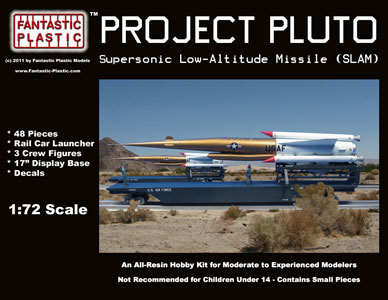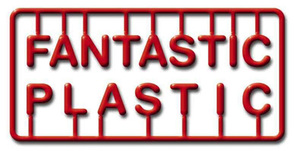Project Pluto SLAM (1967)
About the Design
In 1957, the U.S. Air Force launched Project Pluto, an ambitious program designed to perfect an atomic-powered cruise missile that could serve as the ultimate deterrent against a Soviet attack on the United States.
To be launched by rail car, Pluto would be propelled aloft by three solid rocket boosters that would send the missile to a Fail Safe point at 35,000 feet. Once given its attack orders, the Pluto missile would drop to tree-top level and accelerate to Mach 3. While its sonic boom tore ground structures to shreds, its atomic engine would leave a cloud of deadly radioactive particles in its wake. But that was just the prelude. Pluto's real "punch" would come from the 14 and 26 thermonuclear warheads it could launch vertically as it flew across the Russian landscape, causing unimaginable devastation In 1961, progress on Pluto had progressed far enough that a nuclear-powered ramjet engine dubbed Tory-IIA was tested successfully at a special facility constructed in Jackass Flats, Nevada. Tests continued there until 1964. Ling-Temco-Vought (LTV) was awarded the contract to build the actual airframe. However, the advent of dependable ICBMs coupled with the problems associated with actually testing such a dangerous "Doomsday Weapon" led to Project Pluto being cancelled in 1967. |
About the Kit
Fantastic Plastic's Project Pluto kit was released in October 2011. The model was designed in CAD by Scott Lowther and then grown using stereo lithography. The total diorama was 17 inches long and included a plaster "railway" display base and three plastic crew figures.
A year later, the kit was released in a "Missile Only" version, without the launcher rail car and display base. |


